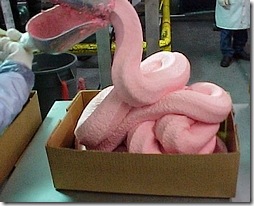 I’m going to be the unpopular voice suggesting we’re discussing symptoms rather than problems. I’ll be the idiot insisting we’re in a place we shouldn’t be, that we’re arguing elitist snobbery when all the fellow in the white lab coat wants to do is feed the world cheaply.
I’m going to be the unpopular voice suggesting we’re discussing symptoms rather than problems. I’ll be the idiot insisting we’re in a place we shouldn’t be, that we’re arguing elitist snobbery when all the fellow in the white lab coat wants to do is feed the world cheaply.
They’ll tell you it’s all about Frankensalmon, but it’s not.
Frankensalmon exists because we ate all the brood stock, paved over the wild fish’s spawning riffle, pulled the gravel out of the streambed to make concrete skyscrapers and to vanish Jimmy Hoffa.
Where was all that righteous indignation when you kept fish you gave the neighbor, or fed your family, or when you flushed that anti-freeze into the sewer under cover of darkness, or when you passed that old lady in the slow lane with a curse and a throaty bellow from those shiny twin exhaust pipes…
That’s when you should have thought of the purity part, the Mother Nature thing, or the Big Picture even …
But you didn’t really … you handed twenty bucks to some other guy hoping he’d conserve the fish on your behalf. You hoped that your twenty matched with a couple hundred thousand others made a difference, something larger, and well intentioned. Naturally it freed you of any obligation to conserve, and the only limit to your fervor the number of vacation days you could beg from an employer.
A couple of decades later you discovered all those twenties had really accomplished very little, as the opposition had so many more of them – and the ear of the legislature to boot.
… and it sure didn’t slow you down any. Just the mention that some of those fish were running had you out crunching gravel, hoping you’d get extra lucky, perhaps you’d even get to keep one.
And while the scientists announced there were no new fish stocks entering the supply chain, and that the world’s oceans were at their zenith of production, with less fish to fight over for the coming decades – you assumed all those warnings applied to the other guy, never you.
Australia announced it was protecting its Bluefin Tuna population from the rest of the world, because the other developed countries couldn’t agree to reduce their catch. The French confessed the existing quotas meant spit, as they were intent on killing any tuna in the Mediterranean; each was worth $40,000 – and even more next year due to their being extincted so quickly.
Ninety-eight percent of the tuna in the Mediterranean has been killed already, and with the fish increasing in value, all those boats will be chasing them North or East, to whichever part of the planet that can support more.
Perhaps you’re aware of the incessant plunder, maybe you even sent another twenty to some fellow who yells into a megaphone at the fellow shotgunning tuna. Freed of that obligation and knowing you’d done the fish a solid, you probably took the spouse out for sushi.
You and your family ate as much as you liked whenever you liked, so did your dad and his family, and while you assumed fish would never run out, it always seemed to be a bit worse than the last trip, until the degree of change was undeniable.
With the Israeli’s shooting up Palestinian fishing boats, the North Koreans impounded a Chinese fishing fleet and some South Korean fishermen, the Somali’s turn to piracy just because they couldn’t compete with those shiny trawlers that vacuumed their coastline, and China seizing Vietnamese fishermen in disputed waters, fish stocks and the old resentments are starting to warm things up a bit.
… or in case you hadn’t noticed, the population of the world continues to grow unchecked, and while we’ve enjoyed a couple hundred years of rich living, demonstrated by our expanding waistlines and type II diabetes, the underdeveloped countries will be wanting their share of Nintendo, Playboy, and salmon fillets shortly.
… and with all the debt we’ve amassed getting here, our government won’t object much. Even if we’ve finally developed the fiscal sensibilities to slowly extricate ourselves from the entire mortgage-induced fiasco, we’ll still need a decade or so of offshore largesse to make a significant dent in the principal owed.
We’d prefer a solution that doesn’t involve lowering the world’s population quickly via emptying most of the silos in South Dakota at the whim of an Alaska governor who thinks the result “winnable.” To that end a couple thousand lab coated wunderkind labor to feed the world, knowing their governments can’t or won’t cooperate, using technology that some avaricious company will try to patent, and will hopefully grow scads of nutritious protein using the RNA of kitty litter mixed with the DNA of some aquatic cockroach.
… some warm water cockroach, so the result isn’t immediately obsolesced by climate change…
… and us fly fishermen puff up our chest and exclaim, How goddamn dare they …
On a world wide scale we’ve probably killed eighty percent of the historic salmon runs, and modified the remaining twenty percent into a mongrelized mixture of hatchery interbred with whatever we added from a bucket in 1880, plus whatever we found there all natural like …
… so we’re down to a half dozen widows and orphans and we’ve yet to show any remorse whatsoever. None of us are prepared to give up the cabin in the pines, the V-6’s or V-12’s that delivered us there, or stem the flow of ibuprofen and estrogen that weeps from our leach field and into the fishery.
… and to a man we’re hoping someone else will lower their carbon footprint so we can consume their share secretly.
It’s not about Frankenfish, it’s about feeding the entire bloody planet.
Now Trout Unlimited is going to take its miniscule little budget which was given to them to rebuild fish stocks and recover despoiled streams, and instead will spend all those dollar bills litigating the FDA into groping “Lumpy Frank’s” privates a second time – just to ensure all that fish-like equipment is still where it’s supposed to be.
… and if it’s considered to be an entirely different species it won’t matter at all. We’ll kill and eat the last of the Salmon, then see if we can entice the Lumpster to eat flies – hoping those algae pellets put a bit of life into his flaccid arse …
I’d guess that Trout Unlimited, like many well meaning conservation organizations, is tired of reclaiming creeks only to watch the press of our feet return them to semi-spoiled within the decade. The problem has and always will be people – not salmon genes – or what a pure salmon should look like …
There’s too many of us, and the irritating thing is we’re growing unabated on both borrowed money and time.
If you’re indignant that we’d cross a Salmon with a licorice stick – yielding something as unsightly as a lumpy salmonid, wait until later when we dispose of all the non essentials like eyes, fins, and lips, and just grow a large amorphous ball of protein, which is carved each morning into irregular shaped filets to give the illusion it once lived in water.
Think how aghast we’ll be if we realized the Omega-3 “slab” on our plate was never sentient, instead making a great flatulent sound as it leaped out of the nozzle and into the brightly colored styrofoam tray below.
Rather you should practice your lust for litigation by peeling the bun back on a Fillet O’ Fish, which is another well documented mongrel, whose pedigree is almost entirely suspect.
 Interactive is a bit of a stretch, unless you count licking the postage stamp.
Interactive is a bit of a stretch, unless you count licking the postage stamp.
 I’m going to be the unpopular voice suggesting we’re discussing symptoms rather than problems. I’ll be the idiot insisting we’re in a place we shouldn’t be, that we’re arguing elitist snobbery when all the fellow in the white lab coat wants to do is feed the world cheaply.
I’m going to be the unpopular voice suggesting we’re discussing symptoms rather than problems. I’ll be the idiot insisting we’re in a place we shouldn’t be, that we’re arguing elitist snobbery when all the fellow in the white lab coat wants to do is feed the world cheaply.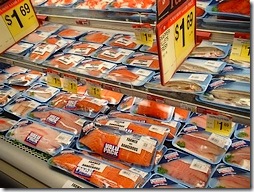 The farmed fish industry may have gotten a bit of a reprieve from all the heat associated with the Frankenfish, apparently UC Davis researchers claim that while farmed fish are responsible for much of the sea lice the fish must navigate through – there’s less evidence those self-same lice are responsible for the collapse of the Pink Salmon population of Western Canada.
The farmed fish industry may have gotten a bit of a reprieve from all the heat associated with the Frankenfish, apparently UC Davis researchers claim that while farmed fish are responsible for much of the sea lice the fish must navigate through – there’s less evidence those self-same lice are responsible for the collapse of the Pink Salmon population of Western Canada.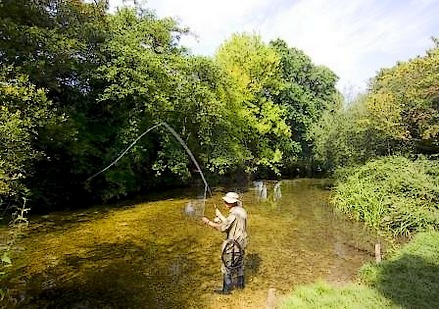


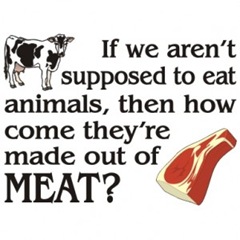 It’s apparent that AFTMA is content stonewalling the issue, but as all those emotional fully urbanized types begin to join ranks, will we recognize the peril before we’re all swept off the streets and put to forced labor?
It’s apparent that AFTMA is content stonewalling the issue, but as all those emotional fully urbanized types begin to join ranks, will we recognize the peril before we’re all swept off the streets and put to forced labor? In the 80’s us lay scientists were full of ourselves. We’d embraced the fact that trout ate bugs, that Latin made us sound really intelligent, and the more syllables and body parts we could string together made us irresistible in a social setting.
In the 80’s us lay scientists were full of ourselves. We’d embraced the fact that trout ate bugs, that Latin made us sound really intelligent, and the more syllables and body parts we could string together made us irresistible in a social setting.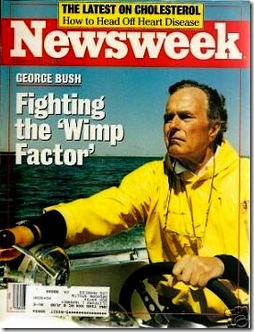 Twenty years of data is pretty compelling evidence that streams are akin to the mortgage crisis, we fiddle and tinker with obstructions and flows attempting to guarantee everyone living on their banks isn’t washed away in a flood, when Darwinism may be the better course for landowner and watershed.
Twenty years of data is pretty compelling evidence that streams are akin to the mortgage crisis, we fiddle and tinker with obstructions and flows attempting to guarantee everyone living on their banks isn’t washed away in a flood, when Darwinism may be the better course for landowner and watershed.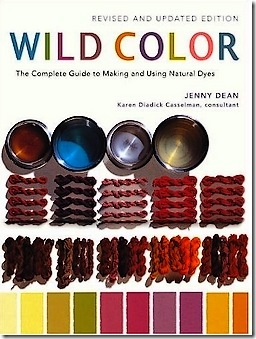 The fun part is you can make every bit as much mess, and your sudden interest in walnut shells won’t be attributable to your fly tying obsession.
The fun part is you can make every bit as much mess, and your sudden interest in walnut shells won’t be attributable to your fly tying obsession.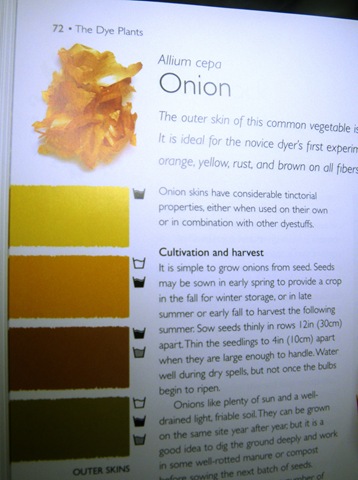
 It’s the end of week eight and the monitor no longer looks edible …
It’s the end of week eight and the monitor no longer looks edible …